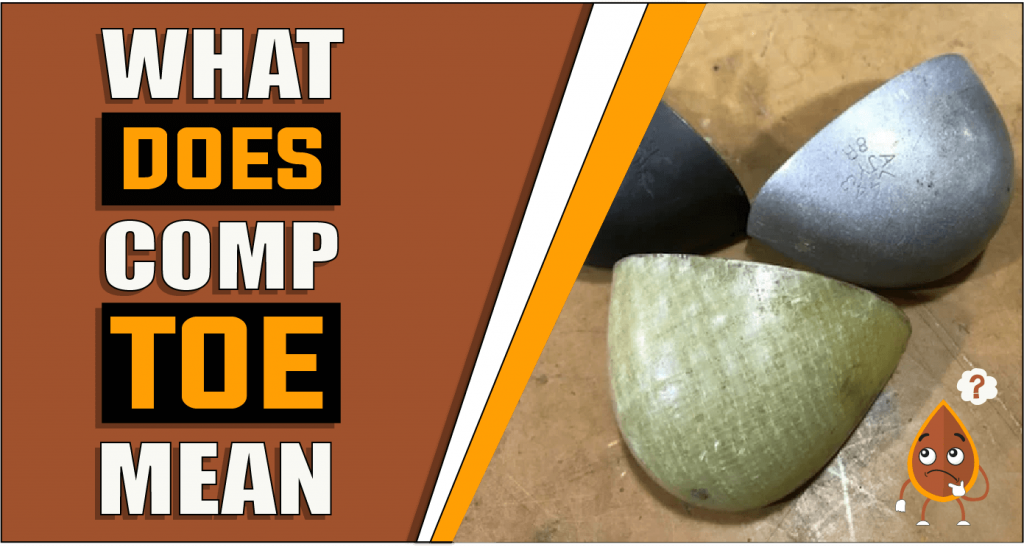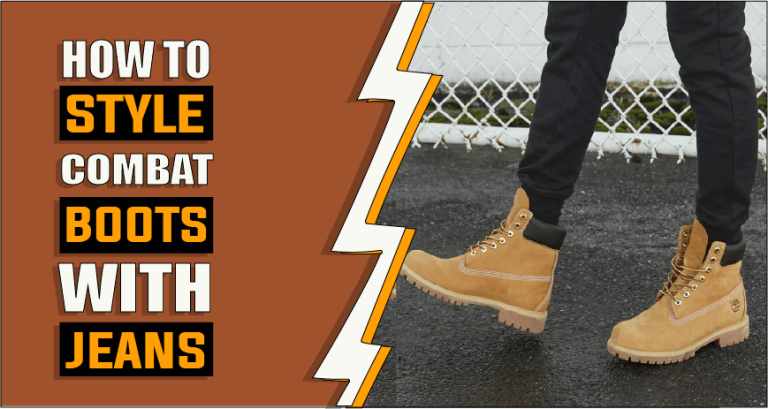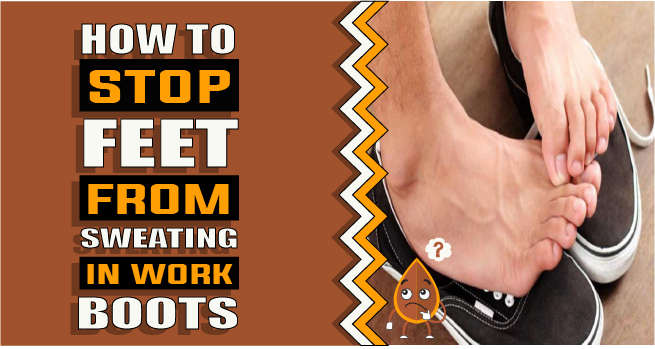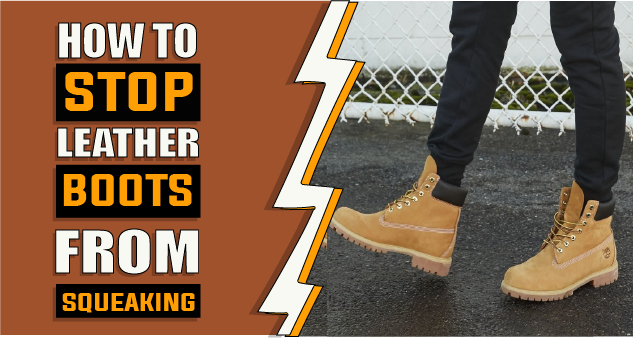What Does Comp Toe Mean – The Truth Reveals
Boots are a versatile and essential piece of clothing for men and women of all ages. They can be dressed up or down to suit nearly any occasion, which is why it’s important to know about all the different types available. Among these, one is known as Comp toe. But what does Comp toe mean? If you’re on the market for a new pair of boots, you might have asked this question yourself. The term “comp toe” is often used when referring to the construction of a boot. We understand that it can be quite confusing so here we will provide a detailed introduction to what this means. In this blog post, we’ll also discuss the meaning of “comp toe” and how it differs from other types of boots. We’ll also give you some pointers on how to select the best pair for yourself. So whether you’re a boots novice or an expert, read on for some valuable information!

What is comp toe and what does comp toe mean for a shoe or boot?
Comp toe is a type of toe protection that is typically found in work boots and other types of shoes. It is designed to protect the toes from being compressed by heavy objects or machinery. Some materials, such as steel, aluminum, and composite materials, can be used to create comp toe boots. Comp toe boots are typically more expensive than their non-safety counterparts. But they can offer a higher level of protection for workers who are at risk for toe injuries. This type of toe protection is typically required by employers in certain industries, such as construction, manufacturing, and logistics. Comp toe boots can also be purchased by consumers who want an extra level of protection for their feet. When looking for a pair of composite-toe boots, it’s important to keep a few points in mind.
1: Fit properly-
A decent fit is among the most crucial characteristics to seek in comp-toe footwear. An improper size boot will always create a problem regardless of whether it is too tight or too loose. Such that instead of protecting your feet, they may even lead to foot injuries and health hazards like blisters. That’s why you must ensure that the boots fit properly before making any purchases.
2: Look for a comfortable shoe-
Another thing to consider when shopping for comp toe footwear is comfort. You’ll be wearing your boots for long periods, so it’s important to find a pair that is comfortable to wear. Don’t forget to consider purchasing boots with padded insoles and an ample toe box.
3: Consider the cost-
Comp toe boots can be more expensive than non-safety footwear. If you’re on a budget, you can also look for sales or discounts on comp toe boots. You can also ask your employer if they allow any kind of discounts on safety gear.
4: Choose the right style-
There are a variety of styles of comp toe boots available. Hence, make sure that the style you choose fits the work you will be doing. If you’re not sure which style of boot or shoe is right for you, ask a sales associate for help.
5: Consider your needs-
Before you buy comp toe boots, take a moment to consider your specific needs. Do you need waterproof boots? Do you need slip-resistant soles? Do you need electrical hazard protection? Once you know what qualities you require, you can narrow down your options and can easily discover the ideal pair of comp-toe boots.
For some people, Comp toe is an essential safety feature that one should look for in their work boots. It can help protect your toes from getting injured by heavy objects or machinery. Make sure to choose a boot or shoe that fits properly, is comfortable to wear, and has the right style for the work you’ll be doing. Consider your needs carefully before you buy to make sure you get the right pair of comp toe boots.
The benefits of comp toe boots?
Comp toe boots offer some benefits over traditional footwear. Here are just a few of the advantages that you can enjoy when you switch to this type of footwear:
1: Protection from impact and compression injuries:
Comp toe boots are constructed with a reinforced toe section that protects your feet from impact and compression injuries. This is especially critical if you work in an area where falling objects or moving machines are a regular occurrence.
2. Improved traction and slip resistance:
The reinforced toe area of comp toe boots also provides improved traction and slip resistance, helping you stay safe on your feet in slippery or wet conditions.
3. Enhanced comfort:
Because comp-toe boots distribute the weight of impact more evenly across the foot, they tend to be more comfortable to wear than traditional footwear. This can be a major advantage if you spend long hours on your feet or if you have foot pain or other issues that can make wearing an uncomfortable pair of shoes a big problem.
4. Aesthetics:
In addition to all of the practical benefits, comp toe boots simply look nicer than their plainer counterparts. If you want your workwear to make a good impression, switching to comp toe footwear is an easy way to do it.
How should you look after your comp toe boots?
Comp toe boots are a type of footwear that features a composite toe cap, which is designed to protect the wearer’s toes from impact and compression. While these boots can be found in a variety of styles, they’re most commonly worn by workers in industrial and construction settings.
If you’re lucky enough to own a pair of comp toe boots, then you’ll want to take good care of them so that they last for as long as possible. How to do that? Here are some suggestions:
1. Don’t wear them in wet or muddy conditions
While composite toe caps are designed to withstand a fair amount of abuse, they’re not meant to be constantly exposed to wet or muddy conditions. If you know you’ll be working in such an environment, then it’s best to leave your comp toe boots at home.
2. Clean them regularly
Just like any other type of shoe, comp toe boots should be cleaned regularly. This will help to remove any dirt, and debris that could potentially damage the composite toe cap.
3. Inspect them for wear and tear
It’s also important to inspect your comp toe boots for signs of wear and tear regularly. If you notice any cracks, splits, or other damage to the composite toe cap, then it’s time to replace your boots.
4. When not used, they should be stored properly.
You must store your comp-toe boots in a cool, dry environment while they are not being used. This will help to prolong their lifespan and prevent any further damage from occurring.
By doing these simple things, you can make sure that your comp-toe boots will last for many years.
The different types of comp toe protection?
There are four main types of composite toe protection: steel toes, aluminum toes, fiberglass toes, and composite toes.
1: Steel Toe-
Steel toes are the most common type of comp toe protection, as they’re the strongest and most durable. However, they’re also the heaviest, which can make them most uncomfortable to wear for long periods.
2: Aluminum toes-
Aluminum toes are a lighter-weight alternative to steel toes, and they’re also more resistant to rust. However, they’re not as strong as steel toes. Hence, they don’t provide as much protection.
3: Fiberglass toes-
Fiberglass toes are the lightest-weight type of comp toe protection, and they’re also the least durable. However, they’re more comfortable to wear over a longer period, and they won’t rust as steel or aluminum toes can.
4: Composite toes-
Composite toes are made from a combination of materials, including steel, aluminum, and fiberglass. They offer the best of both worlds in terms of strength and durability, but they’re also the most expensive type of comp toe protection.
Some potential drawbacks of using comp toe?
Comp toe boots may not be the right choice for everyone. Some potential drawbacks of using comp toe include:
1: Expensive than non-composite options-
While some composite-toe boots are very affordable, in general, they tend to be more expensive than their non-composite counterparts. This is because the manufacturing process of composite toe boots is usually more complex and costly.
2: Not as durable as steel toe-
While composite toe boots are designed to be very durable, they are not quite as tough as steel toe boots. This implies that they might not be the greatest option for individuals who require the highest level of foot protection.
3: Can be uncomfortable-
Some people find that composite toe boots can be quite uncomfortable to wear. This is because the materials used to make them (such as carbon fiber or Kevlar) can be quite stiff and inflexible. As a result, it could be challenging to walk or move around in them for an extended amount of time.
4: Not as breathable as non-composite options-
Composite toe boots are not usually as breathable as non-composite options. As a result, they may not be the ideal solution for those who operate in hot or humid conditions.
5: Can be difficult to find-
Composite toe boots are not as common as other types of work boots, so they can be difficult to find in stores. This is especially true if you have specific needs (such as a wide width). In this case, you might need to order them online or you could place a customized order at a specialty store.
When should you use a comp toe?
There are a few different circumstances in which you might want to use a comp toe.
1: If you operate in a workplace where heavy things are likely to fall on your foot, a comp toe can help protect you from major harm.
2: If you are working in an environment where you are constantly exposed to electrical hazards, then a comp toe can help insulate you from shocks and burns.
3: If you are working in an environment where chemicals or other hazardous materials could splash onto your feet, then a comp toe can help protect your feet from corrosive damage.
4: If you are working in an extremely cold environment, then a comp toe can help keep your toes warm and prevent frostbite.
5: If you are working in an environment where there is a lot of potential for crushing injuries to your feet, then a comp toe can help protect you from serious injury.
Of course, this is not an exhaustive list of all the possible reasons why you might want to use a comp toe. If you have any other specific concerns about workplace safety, then it is always best to consult with your employer or safety supervisor to find out if a comp toe would be appropriate for your particular situation.
How do you calculate comp toe?
The Comp toe is the distance from the center of the big toe to the center of the second toe. To calculate comp toe, simply measure the distance between these two points on your foot.
You can measure your comp toe through a variety of methods. One option is to
1: Use a ruler or measuring tape –
This is the most straightforward way to measure your comp toe. Simply place the ruler or measuring tape at the center of your big toe, and then extend it to the center of your second toe. Make sure that you get an accurate reading by keeping the tape measure level and taking multiple measurements if necessary.
2: Mark the points using a pen or pencil-
If you don’t have a ruler or measuring tape handy, you can still measure your comp toe by marking the relevant points on your foot with a pen or pencil. First, place a mark at the center of your big toe. Then, using a ruler or straight edge, draw a line from this point to the center of your second toe. Once you have your line, simply measure the distance between the two points to get your comp toe measurement.
3: Use a piece of string or yarn –
This method is similar to the one above, but instead of using a pen or pencil, you’ll use a piece of string or yarn. Start by wrapping the string’s one end around the center of your big toe. Once done, mark the center of your second toe by stretching the string to it. Lastly, measure how far apart the two points are to get your comp toe measurement.
No matter which method you use, it’s important to be as accurate as possible when measuring your comp toe. This will ensure that you get the most accurate sizing when shopping for shoes or ordering custom footwear.
Once you have your comp toe measurement, you can use it to shop for shoes that fit properly. In general, you should look for shoes that are about 1/2 an inch longer than your comp toe measurement. This will provide sufficient space for toe movement and will prevent cramping, but not so much that your toes can slide around.
If you’re having trouble finding boots that fit, you may want to consider ordering custom footwear. This is a great option for people with unusual foot shapes or sizes. Custom shoes are made to order based on your specific measurements, so you can be sure that they’ll fit perfectly.
Factors that are considered when calculating comp toe?
A variety of factors can influence your comp toe measurement. These include the width of your foot, the length of your toes, and any irregularities in your foot shape.
1: Width-
The width of your foot can affect your comp toe measurement because it determines how far apart your big toe and second toe are from each other. If you have a wide foot, your big toe and second toe will be further apart, and therefore, your comp toe measurement will be larger.
2: Length-
The length of your toes can also affect your comp toe measurement. If you have long toes, they will protrude further from your foot, which can make your comp toe measurement larger. On the other hand, if you have short toes, they won’t protrude as much, and your comp toe measurement will be smaller.
3: Irregularities
Finally, any irregularities in your foot shape can also affect your comp toe measurement. If you have a high arch, for example, your big toe will sit higher on your foot, which can make your comp toe measurement larger. Similarly, if you have a low arch, your big toe will sit lower on your foot, which can make your comp toe measurement smaller.
Keep all of these factors in mind when taking your comp toe measurement. This will help you to get the most accurate sizing when shopping for shoes or ordering custom footwear.
Composite Toe Boots vs. Steel Toe Boots: Which is Better?
There are a lot of aspects that one needs to consider when it comes to selecting the best safety-toe boots for your needs. Composite toe boots and steel-toe boots are two of the most popular choices for safety-toe boots. Each has its pros and cons, so you must pick the one that works best for you.
Composite Toe Boots:
Advantages:
1: Composite toes are generally lighter than steel toes, making them more comfortable to wear for longer periods.
2: They’re also non-conductive, so they won’t conduct electricity as steel toes can. This is a big plus if you work in a place where electrical hazards can happen.
3: Composite toes are often more flexible than steel toes, giving you more dexterity and range of motion. This can be a major advantage if you need to do a lot of squatting, kneeling, or other activities that may require flexibility in your ankles and toes.
Disadvantages:
1: Composite toes are not as durable as steel toes and can be damaged more easily. They’re also not as effective in protecting you against heavy impacts like falling objects.
2: They’re also more expensive than steel-toe boots.
Steel Toe Boots:
Advantages:
1: Steel toes are the most durable option and will offer the best protection against impacts and other hazards.
2: They’re also less expensive than composite toe boots.
3: Steel toes are non-slip and slip-resistant, making them a good choice if you work in an environment where you’re at risk of slipping or falling.
Disadvantages:
1: Steel toes can be cumbersome and difficult to wear for extended periods.
2: They’re also conductive, which means they can be an electrical hazard if you operate in a workplace where electrical shocks are possible.
3: Steel-toe boots are particularly harder to find in smaller sizes. So, which is better? Composite toe boots or steel toe boots? It depends on your specific needs. If you need the most durable and protective option, steel-toe boots are the way to go. However, if you require footwear that is lighter and more comfortable, composite toe boots may be a better option. In the end, the ideal safety toe boot for you is the one that suits your particular requirements.
Related Questions:
A composite toe is made of different materials than a steel toe, so it depends on what you’re looking for in terms of strength. Generally speaking, a composite toe is going to be lighter and more comfortable than a steel toe, but not necessarily stronger. It depends more on the specific application.
It all depends on your specific requirements. If you require a lighter shoe, then an alloy toe would be the better choice. However, if you need a shoe that is more durable and can withstand more wear and tear, then a composite toe would be the better option.
Yes, the composite toe is OSHA-approved. This type of toe protection is typically made from plastic, metal, and other composite materials. Furthermore, it offers the same amount of protection as a steel toe but is lighter in weight. If you work in construction or another industry where you run the risk of a foot injury, composite toe boots can be an excellent choice.
While composite toe boots are not specifically designed to be insulated, some manufacturers do offer styles with thermal liners or other insulation. If you’re looking for a boot that will keep your feet warm in cold weather, make sure to check the product description to see if the boot is insulated. You can also pair your composite toe boots with thick socks or add an aftermarket insole with built-in insulation for extra warmth.
Composite toes can support up to 75 pounds of weight. However, it is important to note that the amount of weight a composite toe can hold will vary depending on the product quality and the manufacturer itself. Always check the product’s specifications before purchasing to ensure it can meet your needs.
Yes, composite toe boots need to be broken in. This is because the material is stiffer than leather and it takes time for it to soften up. Breaking in your boots will make them more comfortable to wear and will help to prolong their life.
Composite toe boots should fit snugly but not painfully tight. The boot should allow you to move your toes around but shouldn’t rub against your heel or ankle. If you find that you are in between sizes, it is always better to a size up. This will give you more room to insert an orthotic or add a thicker sock if needed.
Conclusion Paragraph-
In conclusion, what does comp toe mean, Composite toe boots are a great choice for people who work in construction or other industries where they are at risk of foot injuries. They are typically lighter and more comfortable than steel-toe boots, so you can wear them right out of the box. However, if you’re new to wearing safety-toe boots, you may want to start with a pair of composite-toe shoes before moving on to boots. This will help you get used to the feel of the composite toe and make sure you’re comfortable before adding the extra weight of a boot. We hope this article has helped you understand what comp toe means and why composite-toe boots are a popular choice for safety footwear. Thanks for reading!
Ella John created BootsSolution.com with the vision of helping people to find the perfect boots for any occasion. As an expert in the field of footwear, she has created a comprehensive guide to finding the perfect boots. With her BA (Hons) in Footwear Design from De Montfort University, UK, Ella John has been writing about boots for several years. On BootsSolution.com you can find helpful information about the latest trends, tips for taking care of your boots, and advice on how to choose the right pair. Ella’s mission is to provide her readers with the best possible advice and help make sure that everyone can look their best in a perfect pair of boots. So if you’re looking for the information and inspiration you need to find the perfect boots, look no further than BootsSolution.com.






